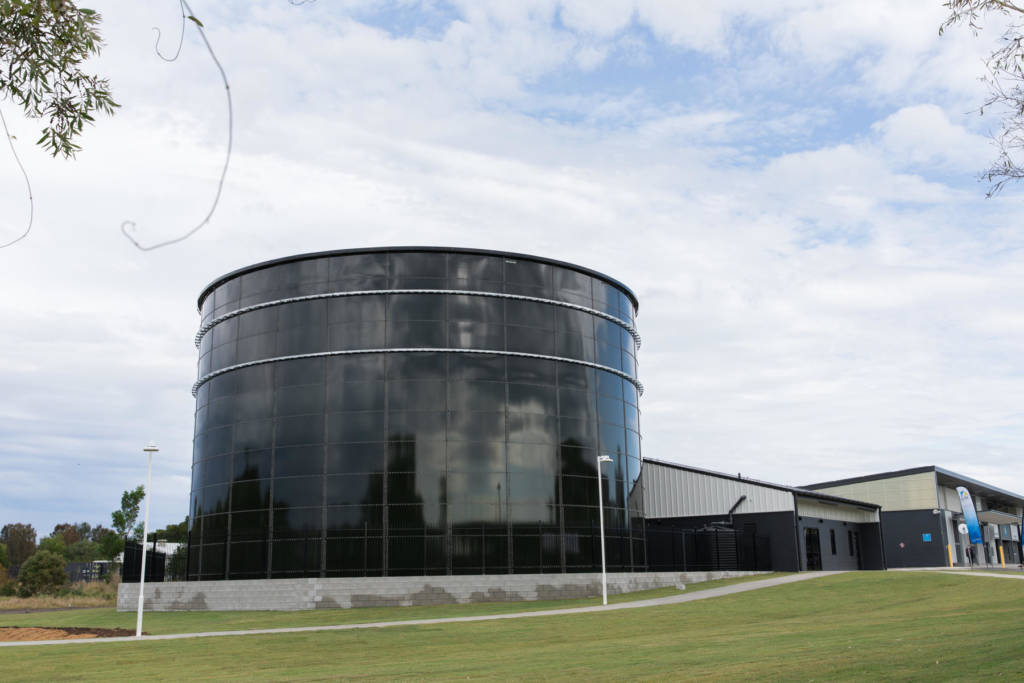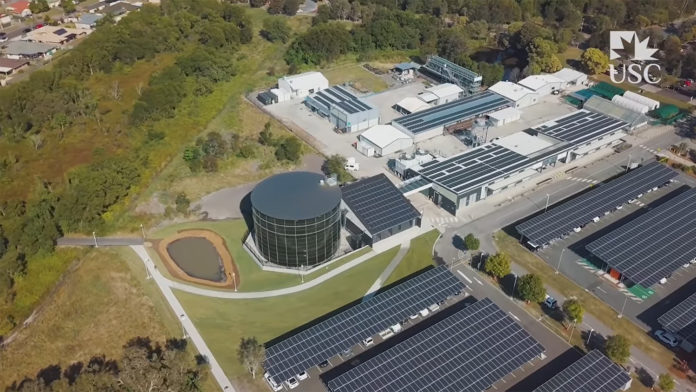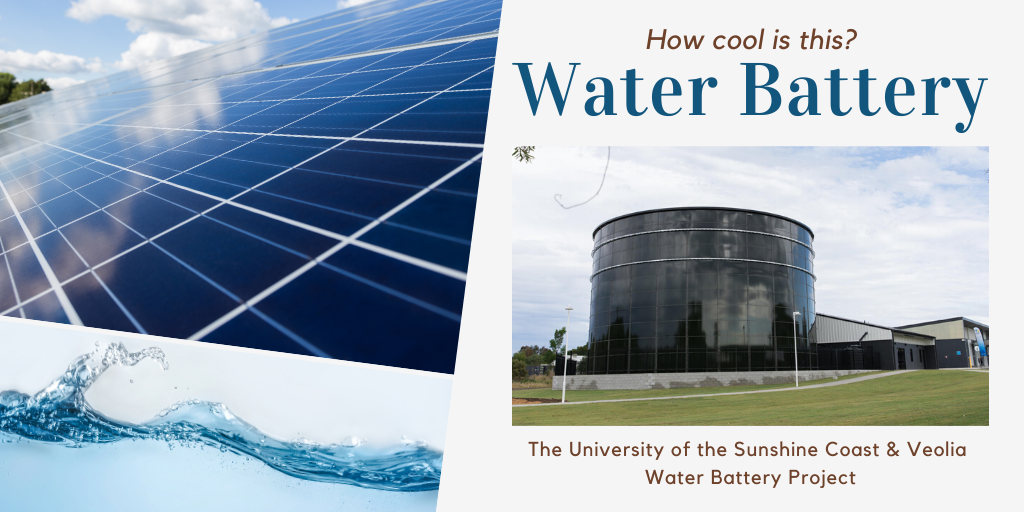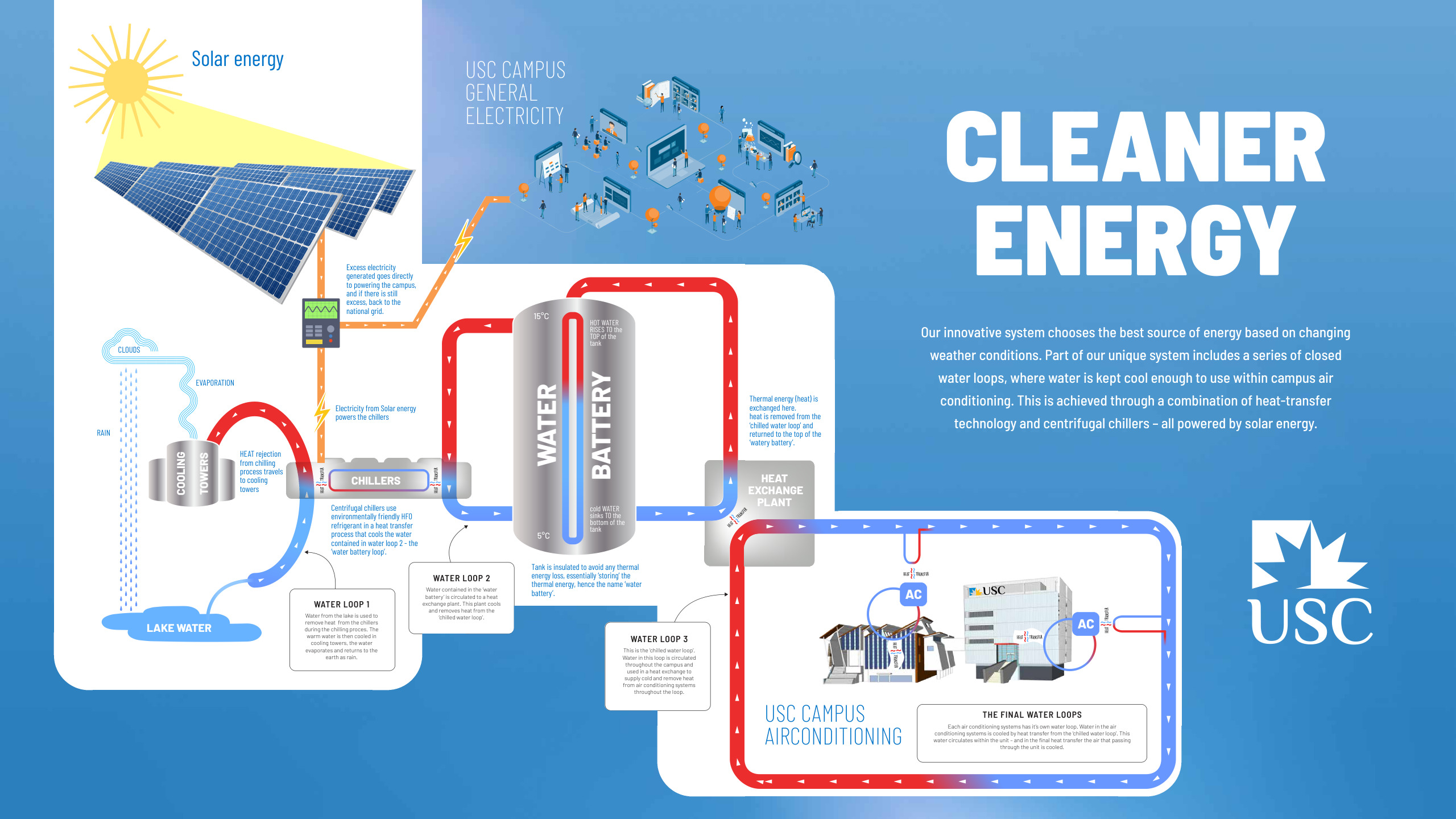OK, so I know things are a little out of the ordinary at the moment, and we are not too sure of what the near future is going to hold, but wait!! Hold up!! How cool is this innovation from the University of the Sunshine Coast (USC) in Queensland? In partnership with Veolia, USC have developed what has been dubbed the “water battery”. It uses more than 6,000 solar panels spread across the campus to cool a 3 story high water tank that will be used for air-conditioning, which is set to slash the campuses grid electricity consumption by 40%.
The water battery is a joint project between USC and Veolia. Veolia installed the panels and tank at no cost to the University. They will operate and maintain the infrastructure for 10 years, and sell the energy generated back to the University at a rate cheaper than electricity from the grid. After this 10-year period, ownership of the infrastructure will transfer to USC.

Over the 25-year life of the project, USC will save $100m on buying electricity from the grid, and any additional electricity costs are quickly eclipsed by the saving (USC 2019). The 2.1-megawatt photovoltaic system, with panels spread across campus rooftops and carpark structures, will produce enough energy to cool 4.5 megalitres of water, effectively acting as a seven-megawatt battery (Veolia 2019). The system is expected to save more than 92 thousand tonnes of CO2 emissions over 25 years, equivalent to the carbon emissions of 525 average Australian houses for the same period.
This system, using solar energy to provide air conditioning across the entire campus, has claimed a rather cool international award in Iceland. USC and Veolia won the Out of the Box category of the Global District Energy Climate Awards for their ‘water battery’ (Innovation Toronto 2020).
The benefits of using the thermal battery rather than lithium-ion batteries include a reduction in the disposal problems for the environment. Thermal batteries also have a storage capacity that is 12 times greater than lead-acid batteries and can store up to six times more energy than lithium-ion batteries (Parletta 2019).
Other recent energy storage projects for and at Australian universities, Monash University’s hybrid battery storage system (Maisch 2019) and The University of Adelaide’s solar energy farm (Mills 2019). Meanwhile, internationally, a small handful of companies are deploying other forms of thermal storage for cooling applications such as air conditioning. These include the US’ Ice Energy, which makes a type of ‘thermal cooling battery’ for air conditioning units, converting electrical energy from PV and other sources and storing it for release as cooled air using fairly simple components and materials like copper (Energy Storage News 2019).

How cool, this and other projects demonstrate that we can have electricity while reducing our carbon and environmental footprint. So if you have the ability to influence others in your workplace, consider if an environmentally friendly power generation is an option for business. If you need a hand or want to discuss potential solutions, give Integrate Sustainability a call (+618) 9468 0338 or email us at enquiries@integratesustainability.com.au.
For more information:
https://www.usc.edu.au/explore/sustainable-usc/clean-energy
https://www.veolia.com/anz/newsroom/new-way-power-universities-usc-set-cool-campus-water-battery
References
Energy Storage News. 2019. Energy Storage News. September. Accessed April 2020. https://www.energy-storage.news/news/aussie-university-installs-7mw-water-battery-to-reduce-intensive-ac-energy.
Innovation Toronto. 2020. Innovation Toronto. Accessed April 2020. https://www.innovationtoronto.com/2019/07/university-of-the-sunshine-coast/.
Maisch, Marija. 2019. PV Magazine. August. Accessed April 2020. https://www.pv-magazine-australia.com/2019/08/09/australias-biggest-behind-the-meter-energy-storage-officially-launched/.
Mills, Robyn. 2019. University of Adelaide . August. Accessed April 2020. https://www.adelaide.edu.au/news/news108702.html.
Parletta, Natalie. 2019. Forbes. April. Accessed April 2020. https://www.forbes.com/sites/natalieparletta/2019/04/03/new-thermal-battery-could-be-a-game-changer-for-storing-renewable-energy/#4505b32e4f95.
USC. 2019. University of the Sunshine Coast – Clean Energy. Accessed April 2020. https://www.usc.edu.au/explore/sustainable-usc/clean-energy.
Veolia. 2019. Veolia. September. Accessed April 2020. https://www.veolia.com/anz/newsroom/new-way-power-universities-usc-set-cool-campus-water-battery.
![]() Images
Images
Water Battery campus solar panels – https://www.inceptivemind.com/massive-water-battery-cut-universitys-electricity-consumption-40/10041/
Water Battery Tank: https://www.veolia.com/anz/newsroom/veolia-australia-and-new-zealand-project-wins-global-district-energy-climate-award
Cleaner Energy Diagram: https://www.usc.edu.au/media/19146404/veolia-diagram-24jan.pdf (https://www.usc.edu.au/explore/sustainable-usc/clean-energy)


